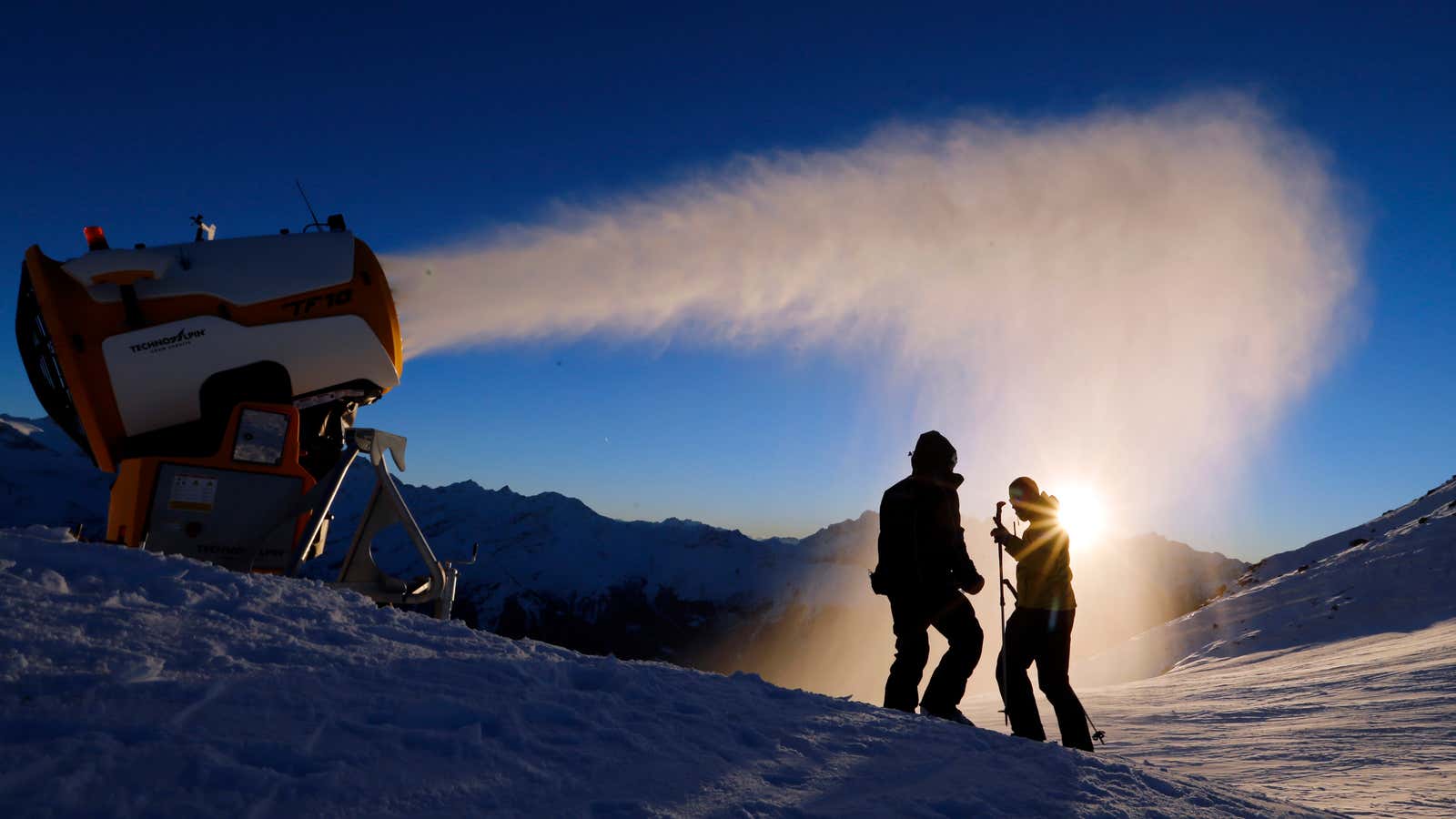Global warming will affect everyone on Earth, likely causing environmental devastation and human displacement at massive economic costs. Those economic effects can sometimes be forestalled by spending now to fight the effects of climate change.
That’s what Switzerland is trying to do. The country’s prized snow-capped Alps, a major tourist attraction, have been melting because climate change has reduced rainfall and increased temperatures. December 2016 was the driest month on record since 1864, and it came a year after the country experienced the warmest December on record.
As Quartz reported previously:
A study published in September 2016 found that Switzerland has 40 fewer snow days a season compared to the 1970s. Ski resorts at both low and high altitudes saw snow arrive, on average, 12 days later and disappear 25 days earlier in 2015 than in 1970.
Starting this summer, Hans Oerlemans of Utrecht University and his colleagues will blow artificial snow onto a small glacier at the foot of Diavolezzafirn, in the south-eastern part of Switzerland. The hope is that a thin white sheet of snow will increase the sunlight reflected, and thus protect the ice underneath from melting, Oerlemans explained at the European Geosciences Union on Thursday (Apr. 27). If this $100,000 pilot project is successful, researchers hope they can raise funding to use the technique to protect the Morteratsch glacier, a huge tourist attraction that’s considered a national treasure—but is shrinking.
Glaciers are slow-moving, persistent bodies of ice. They are created through a constant cycle of melting while fresh snow piles up on top. But as temperatures increase and precipitation falls, there is more melting and less fresh snow, which causes glaciers to recede.
For local residents, these glaciers are a historical part of the landscape, and they are prized by skiers from across the world, who enjoy year-round skiing on their slopes. So both for the sake of aesthetics and tourism, locals of Diavolezzafirn are paying Oerlemans to try and save the Morteratsch glacier. The glacier, which is shrinking by about 30 meters each year, is unusual partly because of how easily it can be accessed. “Locals claim it’s the only place you can reach a glacier from a wheelchair,” Oerlemans told the New Scientist.
One trick that has worked in the past is to cover glaciers with highly reflective material (like white fleece), according to Michiel van den Broeke of Utrecht University, who isn’t involved in the project. This does the job just like artificial snow would, but it is likely too expensive to do on a large scale.
Oerlemans’s calculations suggest that 4,000 snow machines running each year could grow the Morteratsch glacier by 800 meters within 20 years. The artificial-snow covering required at any given time is modest: a few centimeters thick and covering an area of about 0.5 sq. km at any given time. As the glacier thickens, the machines move to another patch of the glacier and start pumping out snow again.
Snow machines are used across the world to ensure that ski resorts have decent quality and quantity of snow available throughout the season, but they only work if the temperature is near freezing, so regrowing glaciers may only work in places where the temperature is that low all through summer. The other problem is ensuring there is a cheap and plentiful source of water to create so much artificial snow.
So the idea seems outlandish, but if it works, the Swiss government might just want to invest the millions needed to protect the Morteratsch glacier. The country’s tourism industry, which partly relies on skiers, brings in 30 billion Swiss francs ($29 billion) annually.
Even if this approach works, however, it’s likely to be only a short-term solution in a warming world. If such glaciers are to survive the century, we will have to reduce our greenhouse-gas emissions drastically over the next few decades.
